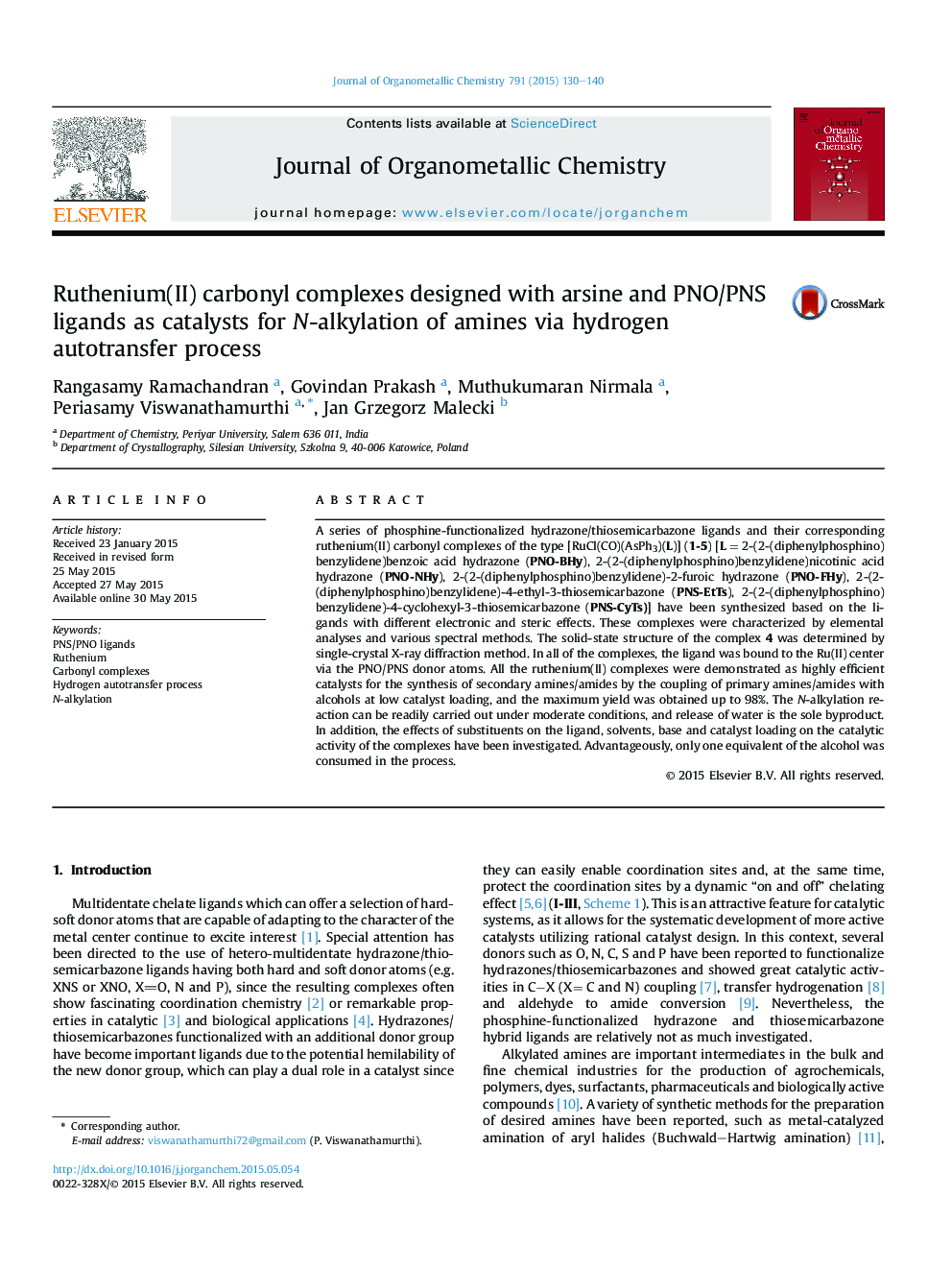| کد مقاله | کد نشریه | سال انتشار | مقاله انگلیسی | نسخه تمام متن |
|---|---|---|---|---|
| 1323209 | 1499852 | 2015 | 11 صفحه PDF | دانلود رایگان |

• Ru(II) carbonyl complexes with PNO/PNS donor ligands were designed and synthesized.
• The ligands coordinate to Ru(II) ion via PNO/PNS fashion.
• The efficient and versatile catalysis of synthesized complexes have been reported.
• The steric and electronic effects of the ligand increased the selectivity.
A series of phosphine-functionalized hydrazone/thiosemicarbazone ligands and their corresponding ruthenium(II) carbonyl complexes of the type [RuCl(CO)(AsPh3)(L)] (1-5) [L = 2-(2-(diphenylphosphino)benzylidene)benzoic acid hydrazone (PNO-BHy), 2-(2-(diphenylphosphino)benzylidene)nicotinic acid hydrazone (PNO-NHy), 2-(2-(diphenylphosphino)benzylidene)-2-furoic hydrazone (PNO-FHy), 2-(2-(diphenylphosphino)benzylidene)-4-ethyl-3-thiosemicarbazone (PNS-EtTs), 2-(2-(diphenylphosphino)benzylidene)-4-cyclohexyl-3-thiosemicarbazone (PNS-CyTs)] have been synthesized based on the ligands with different electronic and steric effects. These complexes were characterized by elemental analyses and various spectral methods. The solid-state structure of the complex 4 was determined by single-crystal X-ray diffraction method. In all of the complexes, the ligand was bound to the Ru(II) center via the PNO/PNS donor atoms. All the ruthenium(II) complexes were demonstrated as highly efficient catalysts for the synthesis of secondary amines/amides by the coupling of primary amines/amides with alcohols at low catalyst loading, and the maximum yield was obtained up to 98%. The N-alkylation reaction can be readily carried out under moderate conditions, and release of water is the sole byproduct. In addition, the effects of substituents on the ligand, solvents, base and catalyst loading on the catalytic activity of the complexes have been investigated. Advantageously, only one equivalent of the alcohol was consumed in the process.
Figure optionsDownload as PowerPoint slide
Journal: Journal of Organometallic Chemistry - Volume 791, 15 August 2015, Pages 130–140